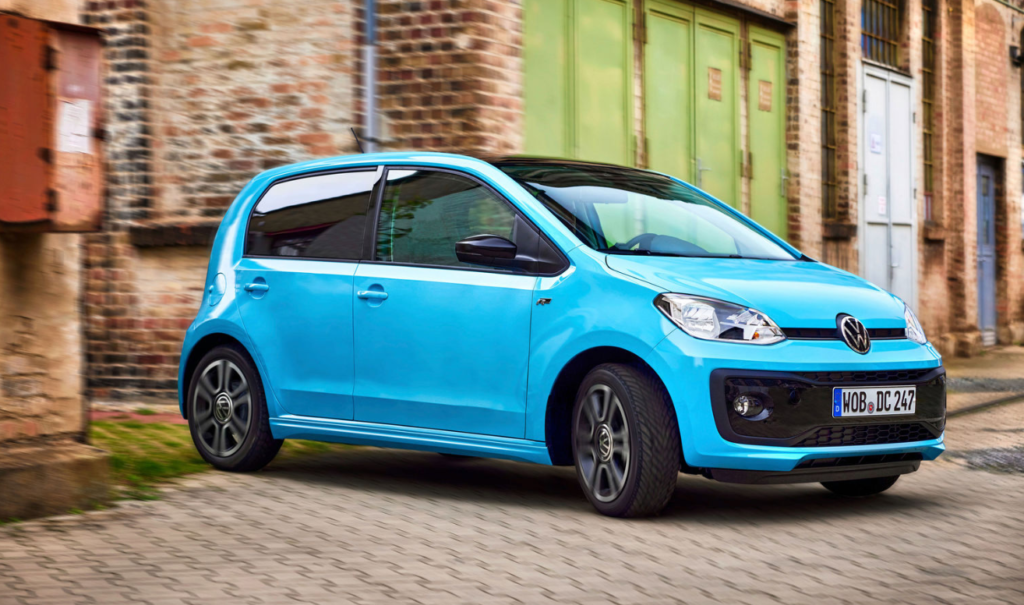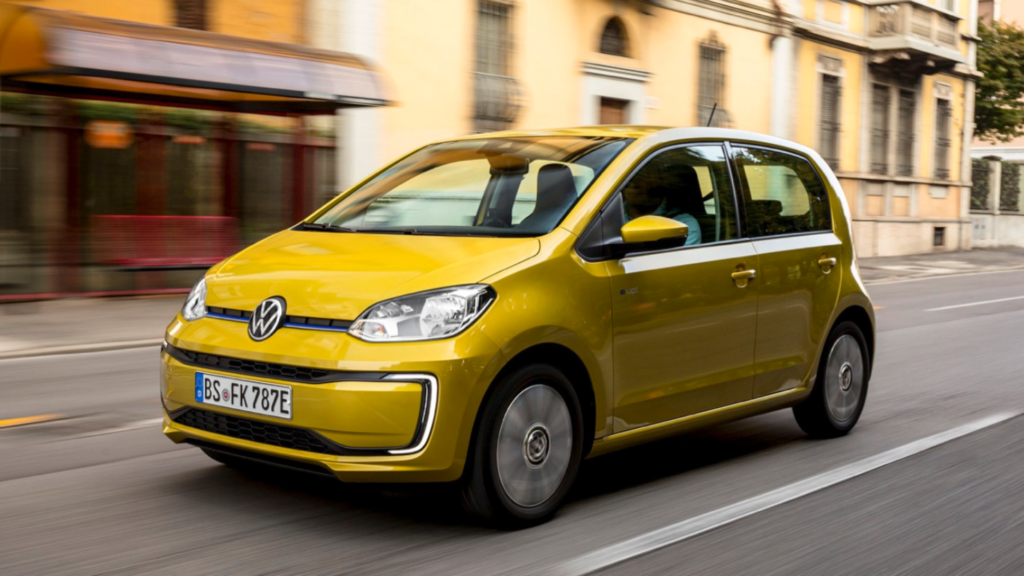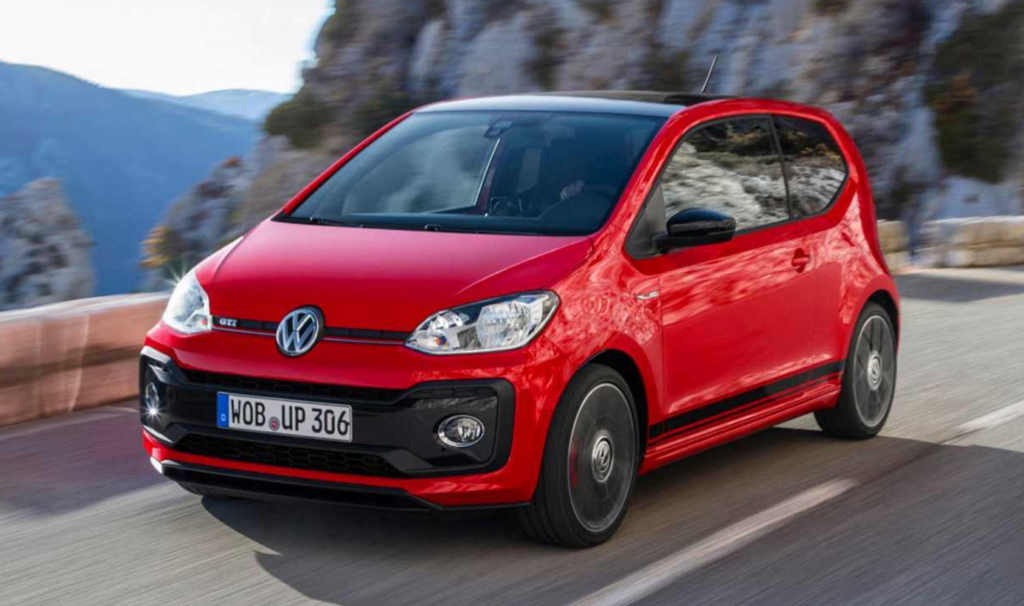The automotive world has witnessed several revolutionary models, each paving the way in its respective segment. The VW Up stands out as one such pioneering model in the compact car category. As urban centers become increasingly congested and the call for environmentally friendly solutions grows louder, compact cars like the VW Up rise in significance. Their size and weight play pivotal roles in meeting these evolving needs.

VW Up: A Pioneer in the Compact Car Segment
When Volkswagen introduced the VW Up, it wasn’t just launching a new car; it was redefining what urban mobility could look like. As cities worldwide grappled with traffic congestion, the demand for smaller, more nimble vehicles grew. The VW Up, with its compact dimensions, modern design, and efficient powertrain, was Volkswagen’s answer. A distinct characteristic of the VW Up is its weight, or more specifically, the VW Up weight dynamics that contribute to its performance, fuel efficiency, and safety.
Why the Weight of a Compact Car is Crucial
The weight of a car, particularly a compact one like the VW Up, significantly influences its efficiency, handling, and environmental footprint. A lighter car typically boasts better fuel efficiency, emits fewer greenhouse gases, and offers zippy handling, making it perfect for city driving. This focus on the VW Up weight ensures it remains a top contender in its segment.
Basics of Car Weight
Delving into the intricacies of car weight requires an understanding of its foundational components and how different terminologies in the industry differentiate one weight from another.
The Fundamental Components and Their Weight Contributions
Every vehicle, including the VW Up, comprises several key components that contribute to its total weight:
- Chassis: Serving as the car’s backbone, the chassis provides the necessary structure and support. The VW Up weight dynamics revolve significantly around its well-engineered chassis.
- Powertrain: This includes the engine, transmission, and drivetrain. Depending on the variant – petrol, diesel, or electric – the VW Up weight can vary due to the powertrain’s different components.
- Interior and Exterior Features: From the upholstery inside to the bumpers outside, every feature adds to the car’s weight. Even amenities like infotainment systems, safety systems, and air-conditioning can impact the VW Up weight.
Distinguishing Between Curb Weight and Gross Vehicle Weight
While discussing the VW Up weight, it’s essential to understand the difference between its curb weight and gross vehicle weight.
- Curb Weight: This is the weight of the car without passengers or cargo, but with all the necessary fluids (like fuel, oil, and coolant). Essentially, it’s the weight of the car ready to drive, straight off the manufacturing line.
- Gross Vehicle Weight (GVW): This encompasses the curb weight plus the weight of all passengers, cargo, and any additional equipment. It represents the car’s weight under full load.

Tracing Back: The Weight Evolution of the VW Up
To appreciate the current VW Up weight, it’s essential to understand its evolutionary journey and the factors influencing its weight dynamics.
Variations Across Different Generations of VW Up
Since its inception, the VW Up has undergone several generational changes. With each generation, there have been tweaks in design, features, and powertrains, all influencing the VW Up weight. For instance, early models were primarily focused on providing a compact, affordable vehicle, ensuring a lightweight structure. As the model matured, it incorporated more safety features, advanced technologies, and even diversified into electric variants, each impacting the VW Up weight differently.
Factors Leading to Weight Changes Over the Years
Several factors have played a role in the VW Up weight dynamics over the years:
- Safety Standards: As global safety norms evolved, the VW Up incorporated more safety equipment and reinforced structures, adding to its weight.
- Technological Advancements: Infotainment systems, advanced driver assistance systems, and other tech features introduced in newer models have influenced the VW Up weight.
- Consumer Preferences: Over the years, consumer preferences shifted towards wanting more features, comfort, and space in compact cars. This influenced Volkswagen’s decisions in design and features, indirectly affecting the VW Up weight.
The VW Up, with its distinct weight dynamics, epitomizes the balance between performance, efficiency, and safety. As urban mobility continues to evolve, understanding factors like the VW Up weight becomes pivotal in making informed automotive choices.
Weight Classification: Different VW Up Models
The Volkswagen Up, often dubbed as the modern city car for its compact yet robust design, has seen various iterations since its launch. A significant factor that differentiates each version is the VW Up weight. By understanding the weight specifics, potential owners and enthusiasts can glean valuable insights into performance, fuel efficiency, and handling.
VW Up Base Model
The base model of the VW Up serves as an entry point for many into the Volkswagen family. Stripped down to essential features, its design ethos centers around simplicity and functionality. Typically, the VW Up weight for the base model tends to be lighter compared to its more feature-rich siblings, providing a nimble experience ideal for city commutes.
VW Up Beats
The VW Up Beats is where style meets substance. With its specialized Beats audio system and unique design elements, this variant introduces added weight to the basic framework. The enhanced infotainment components and additional design embellishments subtly increase the VW Up weight compared to the base model, offering a blend of entertainment and performance.
VW e-Up (Electric Version)
Transitioning to electric, the VW e-Up signifies Volkswagen’s commitment to sustainability. With a battery pack and electric motor replacing the traditional internal combustion engine, the VW Up weight sees a considerable shift. Batteries, by nature, tend to be heavy, making the e-Up slightly heftier than its petrol counterparts.
VW Up GTI
Embodying sportiness in a compact form, the VW Up GTI is a performance-oriented variant. Boasting a turbocharged engine, sportier suspension, and additional performance kits, the VW Up weight for the GTI version is optimized to maintain a balance between speed and stability.
Engine Configurations and Their Impact on Weight
The heart of any vehicle lies in its engine, and with various configurations available for the VW Up, weight implications come into play.
Weight Attributes of the Petrol Engines
Petrol engines, by design, are comparatively lightweight. However, modifications for performance, like turbocharging in the GTI model, can add to the VW Up weight. Components such as turbochargers, intercoolers, and additional piping contribute additional kilograms.
Exploring the Electric Engine of e-Up
Electric motors are generally compact and lightweight, but the significant weight comes from the batteries. The battery pack, essential for storing the electric energy that powers the e-Up, is a major contributor to the overall VW Up weight in this variant.
Transmission Choices: How They Affect Weight
The VW Up offers different transmission choices, each with its weight implications. Manual transmissions, being mechanically simpler, tend to weigh less than their automatic counterparts. However, the weight difference is often marginal and overshadowed by other components in the overall VW Up weight.
Role of Design and Amenities in Weight
A car isn’t just about its engine and performance; design and amenities play a crucial role, especially in the modern automotive landscape.
Interior Features and Weight Additions
From the seats to the entertainment system, the interior of the VW Up contributes significantly to its weight. Features such as air conditioning, infotainment systems, and advanced safety equipment all add to the VW Up weight. Premium trims with leather seats and high-end audio systems further push the scale.
The Influence of Exterior Additions and Design Elements
On the outside, design elements like alloy wheels, roof rails, and additional body kits can influence the VW Up weight. While these additions may add style and functionality, they also introduce additional kilograms to the car’s overall mass.

Weight and the Driving Experience
The driving dynamics of a car, especially one as compact as the VW Up, are heavily influenced by its weight.
Acceleration, Speed, and Weight: The Relationship
A lighter car, like the base VW Up, can accelerate faster than a heavier counterpart given the same power output. Thus, the VW Up weight directly correlates with its acceleration prowess.
How Weight Affects Handling and Maneuverability
Weight distribution and the overall VW Up weight play crucial roles in handling. A well-balanced car provides better cornering capabilities and maneuverability, essential traits for city driving.
Braking Efficiency in Light of the VW Up’s Weight
Heavier cars require more force to come to a stop. Hence, the VW Up weight dictates the efficiency of its braking system. While the difference might not be stark across the Up variants, it becomes noticeable when comparing the electric and petrol versions due to the added weight of batteries.
The VW Up stands as a testament to how weight dynamics influence every aspect of a vehicle, from its performance and efficiency to safety and driving experience. By understanding these intricacies, one can truly appreciate the engineering marvel that is the VW Up.
Fuel and Energy Efficiency Correlation with Weight
Every vehicle’s efficiency, be it fuel or energy, is closely tied to its weight. The VW Up, with its range of models, provides a clear demonstration of this relationship.
How Weight Affects the Fuel Economy in Petrol Models
The equation is straightforward: the heavier the car, the harder the engine has to work to move it. For every increase in the VW Up weight, especially in its petrol models, there’s a corresponding drop in its fuel economy. It means more frequent trips to the petrol station and higher fuel costs over time.
Weight Implications for the Electric e-Up’s Range
Similarly, for the electric e-Up, an increase in VW Up weight means the battery drains faster, leading to a shorter driving range. Batteries have to discharge more energy to move a heavier car, reducing the overall distance it can travel on a single charge.
Safety Considerations of VW Up’s Weight
The weight of a vehicle is not just about efficiency; it has profound implications for safety as well.
Impact of Weight on Crash Test Outcomes
A heavier vehicle can offer more protection during a collision due to its increased inertia and the structural advantages of added mass. However, if a car is too heavy, it might become harder to control in emergency situations. The VW Up weight has been optimized to provide a balance, ensuring safety while not compromising on agility.
Weight and Stability: Navigating Through Diverse Conditions
A car’s stability, especially in challenging conditions like wet or icy roads, is influenced by its weight. The VW Up weight distribution has been designed to ensure the car remains stable, minimizing risks of skids or rollovers.
Aftermarket Additions and Weight Adjustments
For those who love to personalize their cars, aftermarket additions can bring changes to the VW Up weight.
Modifications That Can Increase Weight
Adding features like bigger wheels, sound systems, or roof racks can significantly increase the VW Up weight. While these might enhance aesthetics or functionality, they could also affect fuel or energy efficiency and handling.
Enhancements for Weight Reduction and Performance
Performance enthusiasts often look for ways to reduce car weight. Carbon fiber components, lightweight wheels, or even stripping out some interior elements can decrease the VW Up weight, leading to improved acceleration and handling.
Recommendations for Weight Management for VW Up Owners
Keeping the Car Free from Unneeded Items
A simple yet effective strategy is to ensure the car is free from unnecessary items. Regularly clearing out the trunk and backseat can ensure the VW Up weight stays optimal.
Scheduled Maintenance and the Role of Weight Optimization
Routine maintenance checks can ensure that parts that add unnecessary weight, like rusted components or accumulated debris, are addressed. This not only maintains the VW Up weight but also ensures longevity.
Summary
The VW Up weight plays a pivotal role in its performance, safety, and efficiency. Whether you opt for a petrol model, the electric e-Up, or decide on aftermarket modifications, understanding this relationship can enhance your driving experience. Striking the right balance ensures the VW Up remains agile, safe, and efficient. Volkswagen’s meticulous design approach guarantees that this compact car delivers on all fronts.
Frequently Asked Questions (FAQs)
How does the VW Up’s weight compare to its rivals?
While exact comparisons can vary, the VW Up weight is competitive, offering a balance of efficiency and safety in its class.
What modifications can change the weight of my VW Up significantly?
Both interior and exterior modifications, like adding sound systems or bigger wheels, can affect the VW Up weight.
How does weight variation affect the longevity of the VW Up?
Increased weight can put more strain on components, possibly affecting longevity. Regular maintenance can counteract these effects.
What are the safety standards of the VW Up concerning its weight?
Volkswagen ensures that the VW Up weight adheres to all safety regulations, providing stability and optimized crash protection.
Are there weight considerations for optimizing electric range in the e-Up?
Yes, maintaining an optimal VW Up weight in the e-Up ensures better battery efficiency and a longer driving range.
In essence, the VW Up weight is a defining characteristic, influencing everything from driving dynamics to safety and efficiency. By understanding these intricacies, owners can get the most out of their vehicle.